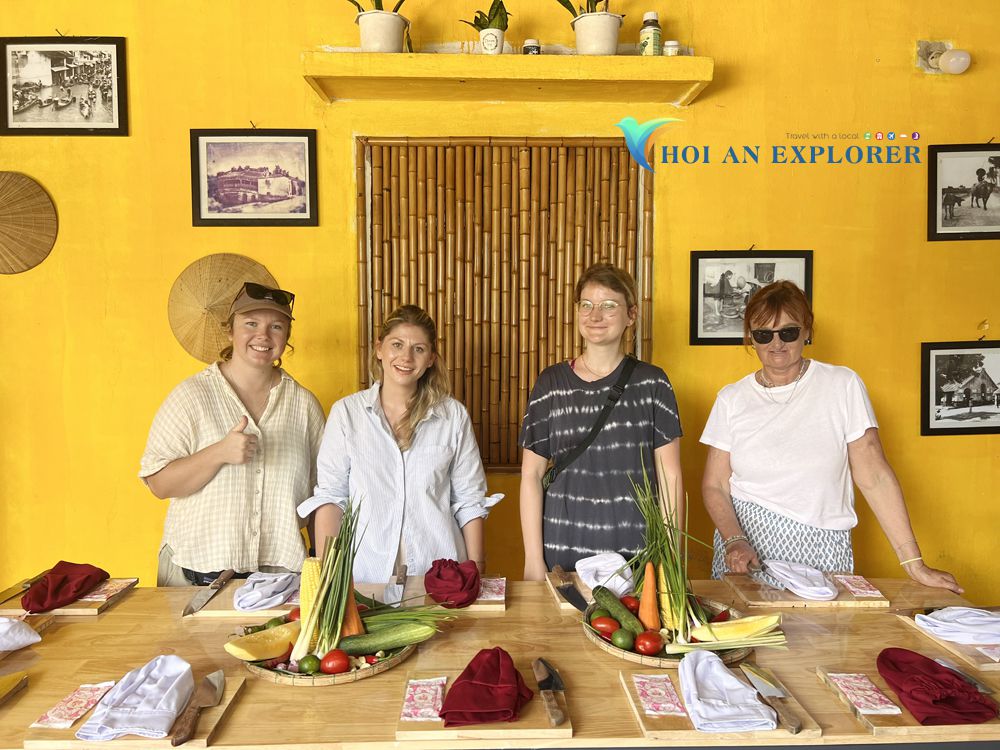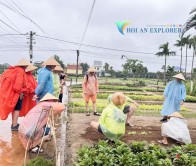How Hoi An Cooking Classes Incorporate Coconut and Other Local Ingredients
When you think of Hoi An, images of lantern-lit streets, ancient houses, and peaceful riverbanks might come to mind. But did you know that Hoi An is also a culinary treasure trove? One of the most immersive ways to explore its rich food culture is by joining a local cooking class. What makes these classes truly special is how they incorporate coconut—a versatile ingredient—and other fresh, local produce to create authentic dishes bursting with flavor.

Let’s dive deep into how these cooking experiences celebrate local ingredients and turn them into unforgettable flavors.
Coconut: The Star Ingredient in Hoi An’s Culinary Scene
Coconut isn’t just an ingredient in Hoi An—it’s a way of life. From the lush Cam Thanh Bay Mau Coconut Forest to the daily lives of local families, coconut finds its way into every corner of the culture and cuisine. Cooking classes in Hoi An make sure you understand and appreciate the versatility of this ingredient.
Coconut Water: Nature’s Flavor Booster
In many Hoi An dishes, coconut water is used instead of plain water for cooking. Why? Because it infuses dishes with a subtle sweetness and aroma. When making dishes like cá kho tộ (caramelized fish in clay pot), coconut water adds a unique depth of flavor that’s hard to replicate.
Coconut Milk: The Creamy Secret
Coconut milk brings a creamy texture and richness to iconic dishes like cao lầu or sweet desserts such as chè bắp (sweet corn pudding). Cooking classes teach you how to extract fresh coconut milk from grated coconut flesh—showing how locals keep everything fresh and chemical-free.
Coconut Oil: For Flavorful Frying
Some classes highlight the use of coconut oil for frying spring rolls or sautéing vegetables. It not only enhances the aroma but also adds a subtle nutty flavor that elevates the entire dish.
Grated Coconut and Coconut Candy
Grated coconut is often used in traditional desserts like bánh dừa nướng (grilled coconut cake), while coconut candy demonstrates the local sweet tooth. Students get hands-on experience in making these treats, learning how the texture of fresh coconut transforms a simple dish into something extraordinary.
Local Ingredients That Shine in Hoi An Cooking Classes
Beyond coconut, Hoi An’s cooking classes embrace a variety of local ingredients that reflect the region’s abundance. These classes usually begin with a visit to a local market or even a trip through the Bay Mau Coconut Forest by basket boat—gathering herbs, vegetables, and spices fresh from the source.
Fresh Herbs from the Tra Que Vegetable Village
Hoi An cuisine wouldn’t be complete without aromatic herbs. Many cooking classes include a visit to Tra Que Vegetable Village, where students pick fresh basil, mint, lemongrass, and coriander. These herbs are essential in dishes like gỏi cuốn (fresh spring rolls) and bánh xèo (Vietnamese pancakes), adding brightness and complexity.
Fresh Seafood from the Thu Bon River
Hoi An’s proximity to rivers and the sea means fresh seafood is a staple. Participants often learn how to prepare dishes like mì Quảng tôm thịt (Quang noodles with shrimp and pork) or grilled fish in banana leaves, using seafood sourced directly from local fishermen.
Local Spices: The Flavor Game-Changers
No Vietnamese dish is complete without spices. From chili and black pepper to turmeric and star anise, cooking classes in Hoi An teach you how to balance these flavors perfectly. The subtle use of these spices ensures that every bite is both comforting and exciting.
Rice: The Heart of Every Meal
Hoi An cooking classes also pay tribute to rice, which is central to Vietnamese cuisine. Students learn to make bánh cuốn (steamed rice rolls) or xôi (sticky rice) from scratch, understanding how rice’s versatility plays a role in both savory and sweet dishes.
Experiential Learning: More Than Just Cooking
Hoi An’s cooking classes offer more than recipes—they provide cultural context. Many experiences start with a basket boat ride through the Bay Mau Coconut Forest, where instructors explain how the forest’s coconut palms have supported local livelihoods for generations.
Here’s how these cooking classes go beyond the kitchen:
- Harvesting Your Own Ingredients: Pick fresh herbs from organic gardens.
- Fishing with Locals: Learn traditional fishing techniques using bamboo traps.
- Cooking in Traditional Homes: Classes are often held in local homes, offering insights into daily life and traditions.
- These immersive experiences help visitors connect with the land, the people, and the stories behind every dish
- Popular Dishes Featuring Coconut and Local Ingredients
Here are some standout dishes you’ll likely learn to cook—and fall in love with
Coconut Braised Fish (Cá Kho Dừa)
A rich, savory dish where fish is slow-cooked in a clay pot with coconut water and caramelized sugar. The result? A deep umami flavor balanced with the sweetness of coconut.
Hoi An Spring Rolls with Coconut Dipping Sauce
Fresh herbs, vermicelli, and shrimp wrapped in rice paper, served with a tangy, creamy dipping sauce made from coconut milk and peanuts—a refreshing twist on a classic.
Coconut Sticky Rice with Mango (Xôi Xoài Dừa)
A dessert that blends sticky rice steamed in coconut milk, topped with ripe mango slices and toasted sesame seeds. Cooking classes emphasize balancing sweetness and texture for the perfect finish.
Why Hoi An Cooking Classes Offer a Unique Culinary Journey
What sets Hoi An’s cooking classes apart is their focus on sustainability, local culture, and hands-on experience. They don’t just teach you how to cook; they teach you how to cook like a local—respecting ingredients, understanding history, and savoring every bite.
Key Highlights of Hoi An Cooking Classes
- Authentic recipes passed down through generations.
- Use of fresh, organic, and locally-sourced ingredients.
- Cultural storytelling that connects food with heritage.
- Step-by-step guidance suitable for beginners and seasoned cooks alike.
Final Thoughts: Taste the True Essence of Hoi An
Mr and Ms Smith cooking classes are more than culinary lessons—they are cultural journeys. By incorporating coconut and other local ingredients, these classes offer an authentic taste of Central Vietnam’s rich traditions. Whether you’re steaming rice rolls, stirring fragrant coconut curry, or savoring fresh herbs from Tra Que cooking classes, each moment is a memory waiting to be savored.
Ready to unlock the flavors of Hoi An? Book a cooking class today and let the culinary magic begin!



